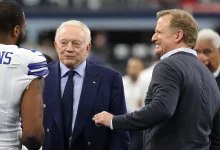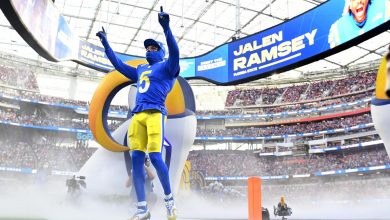On January 9, 1972, Kareem Abdul-Jabbar scored 39 points and grabbed 20 rebounds, leading Milwaukee Bucks to a 120-104 win over the Lakers, ending their 33-game winning streak.

On January 9, 1972, a pivotal moment in NBA history unfolded at Milwaukee Arena—a game that would be remembered not only for Kareem Abdul-Jabbar’s exceptional performance but also for its significance in the league’s evolving narrative of dominance, resilience, and competitive greatness. Abdul-Jabbar, then a young star with the Milwaukee Bucks, scored 39 points and collected 20 rebounds, leading his team to a commanding 120-104 victory over the Los Angeles Lakers, snapping the Lakers’ remarkable 33-game winning streak. This game remains a landmark event, emblematic of Abdul-Jabbar’s rising dominance and the shifting dynamics of the NBA in the early 1970s.
Context: The NBA Landscape in the Early 1970s
The NBA in the early 1970s was a league in transition—expanding its reach, increasing its talent pool, and cultivating a new era of superstar athletes. The Lakers, led by stars like Jerry West and Wilt Chamberlain, had established themselves as a dominant force, especially with their innovative fast-paced style and star power. Their 33 consecutive wins, a record at the time, signified their near-invincibility and set a high bar for excellence.
Meanwhile, the Milwaukee Bucks, a relatively young franchise founded in 1968, were on the rise. Acquiring Kareem Abdul-Jabbar (then known as Lew Alcindor) in 1969 from UCLA—where he had established himself as one of the greatest college players of all time—the Bucks quickly built a competitive team around their star center. Abdul-Jabbar’s unique skyhook shot, his towering presence, and his exceptional rebounding ability made him a formidable force. The Bucks, under coach Larry Costello, were emerging as playoff contenders, with Abdul-Jabbar leading the charge.
The game on January 9, 1972, was more than just a regular season matchup; it was a clash of titans, a test of resilience, and a showcase of Abdul-Jabbar’s rising dominance in the league.
The Game: A Night of Stellar Performance and Strategic Mastery
The game itself was intense and fiercely contested. The Lakers entered the matchup riding high on their winning streak, fueled by their cohesive team play and star talent. The Bucks, aware of the significance of the game, played with determination and focus.
Kareem Abdul-Jabbar’s performance was nothing short of spectacular. Scoring 39 points, he demonstrated his offensive prowess, particularly with his signature skyhook, which was nearly unstoppable. His ability to score in the paint, combined with his footwork and size advantage, kept the Lakers on their heels throughout the game.
But Abdul-Jabbar’s impact extended beyond scoring. He was also a dominant rebounder, securing 20 boards—an impressive feat given the level of competition. His rebounding not only stifled Lakers’ second-chance opportunities but also ignited fast-break opportunities for the Bucks.
The game’s flow was characterized by Abdul-Jabbar’s commanding presence on both ends of the floor. His defense was equally impactful, challenging shots and altering the Lakers’ offensive rhythm. His leadership on the court galvanized the Bucks’ defense and kept the team focused.
In response, the Lakers fought hard, leveraging their experience and talent. Jerry West played a pivotal role, and Wilt Chamberlain’s presence in the paint provided a formidable counterpoint. Yet, Abdul-Jabbar’s consistency and dominance proved decisive.
By the end of the game, the Bucks secured a 120-104 victory, ending the Lakers’ 33-game winning streak—a streak that had captured the league’s imagination and symbolized their near-invincibility.
Significance of the Victory: Breaking the Streak and Its Aftermath
The end of the Lakers’ 33-game winning streak was a watershed moment in NBA history. It marked the first time in league history that a team had won so many consecutive games, highlighting the Lakers’ exceptional form and resilience. However, the victory by the Bucks was equally symbolic of the league’s competitive parity and the emergence of new powerhouses.
For the Lakers:
The streak’s end was a blow, but it also served as a wake-up call. It reminded the Lakers—and the league—that even the most dominant teams are vulnerable. It underscored the importance of sustained effort, adaptability, and resilience in professional basketball.
For the Bucks:
The victory elevated the Bucks’ standing in the league. It showcased Abdul-Jabbar’s ascension as a league superstar capable of leading his team against the best. The win also validated the Bucks’ strategic roster construction and coaching, placing them firmly among the league’s contenders.
For Abdul-Jabbar:
This game was a defining moment early in his NBA career. Though he had already established himself as a premier player at UCLA, this performance against a legendary Lakers team cemented his reputation as a dominant force capable of changing the course of games and seasons.
For the NBA:
The game exemplified the league’s increasing competitiveness and the rise of individual stars capable of elevating their teams. It also marked a shift in the league’s narrative—no longer were dynasties invincible, and every game could produce surprises.
Kareem Abdul-Jabbar: From Rising Star to League Icon
Kareem Abdul-Jabbar’s performance on January 9, 1972, was emblematic of his evolution from a promising young player into one of the greatest centers in NBA history. His skyhook, a shot nearly impossible to block, became a symbol of his dominance and a defining feature of his career.
At just 24 years old, Abdul-Jabbar’s leadership, skill, and poise on the court were already evident. His ability to score, rebound, and defend made him a triple-threat, and his basketball IQ was unmatched. His performance against the Lakers’ formidable roster showcased his capacity to perform under pressure and lead his team to victory.
This game also marked the beginning of Abdul-Jabbar’s reputation as a clutch performer. Over his career, he would continue to deliver memorable performances in critical moments, earning six NBA championships, six MVP awards, and inclusion in the all-time greats list.
The Broader NBA Narrative: The Rise of the Modern Superstar
The game’s significance extends beyond the immediate victory. It exemplifies the shifting landscape of professional basketball—where individual brilliance, strategic team play, and resilience define success.
In the early 1970s, the NBA was transitioning from the era dominated by legends like Bill Russell and Wilt Chamberlain to a new generation of stars such as Abdul-Jabbar, Julius Erving, and later Magic Johnson and Larry Bird. Each game, especially marquee matchups like the Lakers vs. Bucks, contributed to the league’s growing popularity and global appeal.
Abdul-Jabbar’s performance helped propel him into the league’s mainstream consciousness, paving the way for future superstars. His ability to elevate his team in high-stakes moments was a template for excellence that many players aspire to emulate.
Legacy of the Game: Inspiration and Lessons
The victory on January 9, 1972, remains a source of inspiration for players, coaches, and fans. It underscores several key lessons:
- Resilience Matters: No team is invincible. The Lakers’ winning streak was remarkable, but even the best can be beaten on any given night.
- Star Power is Critical: Abdul-Jabbar’s performance exemplifies how a single player’s excellence can change the course of a game and influence league history.
- Teamwork and Strategy: The Bucks’ collective effort, led by Abdul-Jabbar, highlights the importance of cohesive team play in overcoming formidable opponents.
- Legacy Building: Moments like these define careers and leagues. Abdul-Jabbar’s performance contributed to his legendary status and the ongoing narrative of excellence in the NBA.
A Historic Night in NBA History
The game on January 9, 1972, is etched into NBA history as a testament to excellence, resilience, and the evolving nature of professional basketball. Kareem Abdul-Jabbar’s stellar performance—scoring 39 points, grabbing 20 rebounds, and leading the Milwaukee Bucks to a decisive victory—was more than just a game; it was a statement.
It marked the end of the Lakers’ 33-game winning streak, breaking their momentum and illustrating that even the most dominant teams can be challenged and defeated. Moreover, it signaled Abdul-Jabbar’s arrival as a league superstar and set the stage for his legendary career.
This game remains a timeless reminder of the unpredictable thrill of sports, the power of individual brilliance, and the importance of perseverance and resilience. It also exemplifies how a single game can influence perceptions, inspire future generations, and become a defining chapter in the rich tapestry of NBA history.









